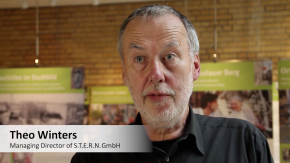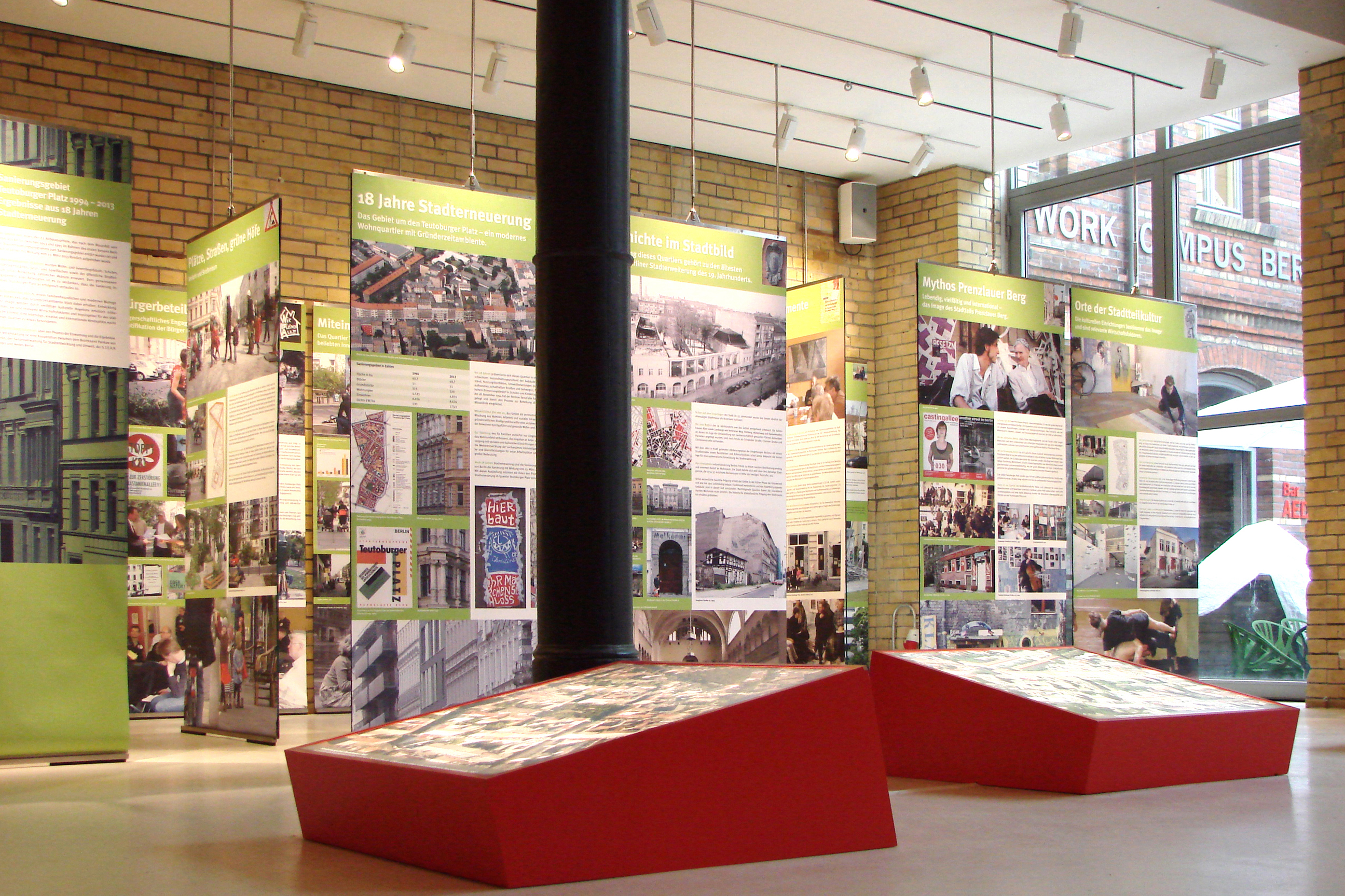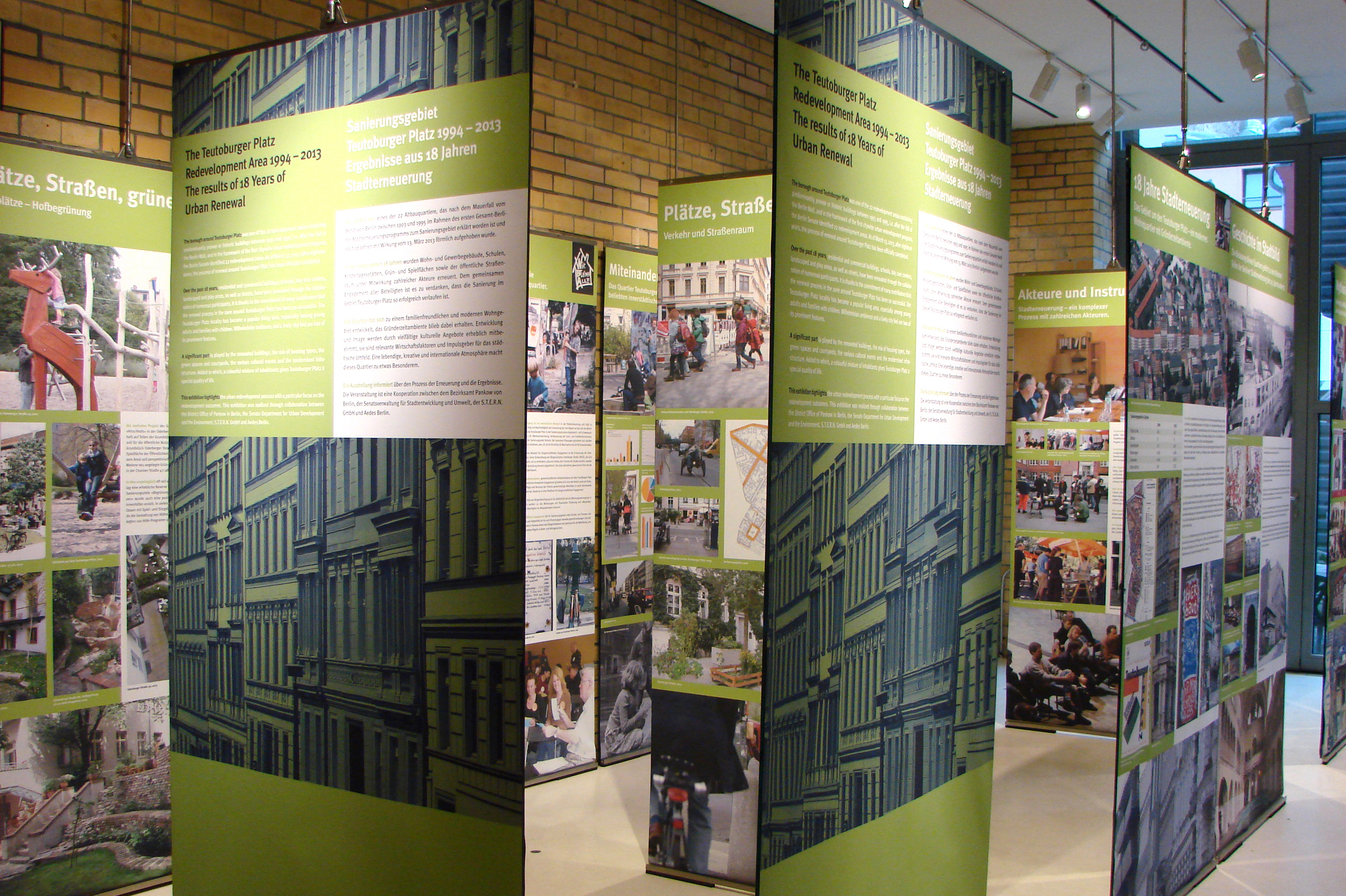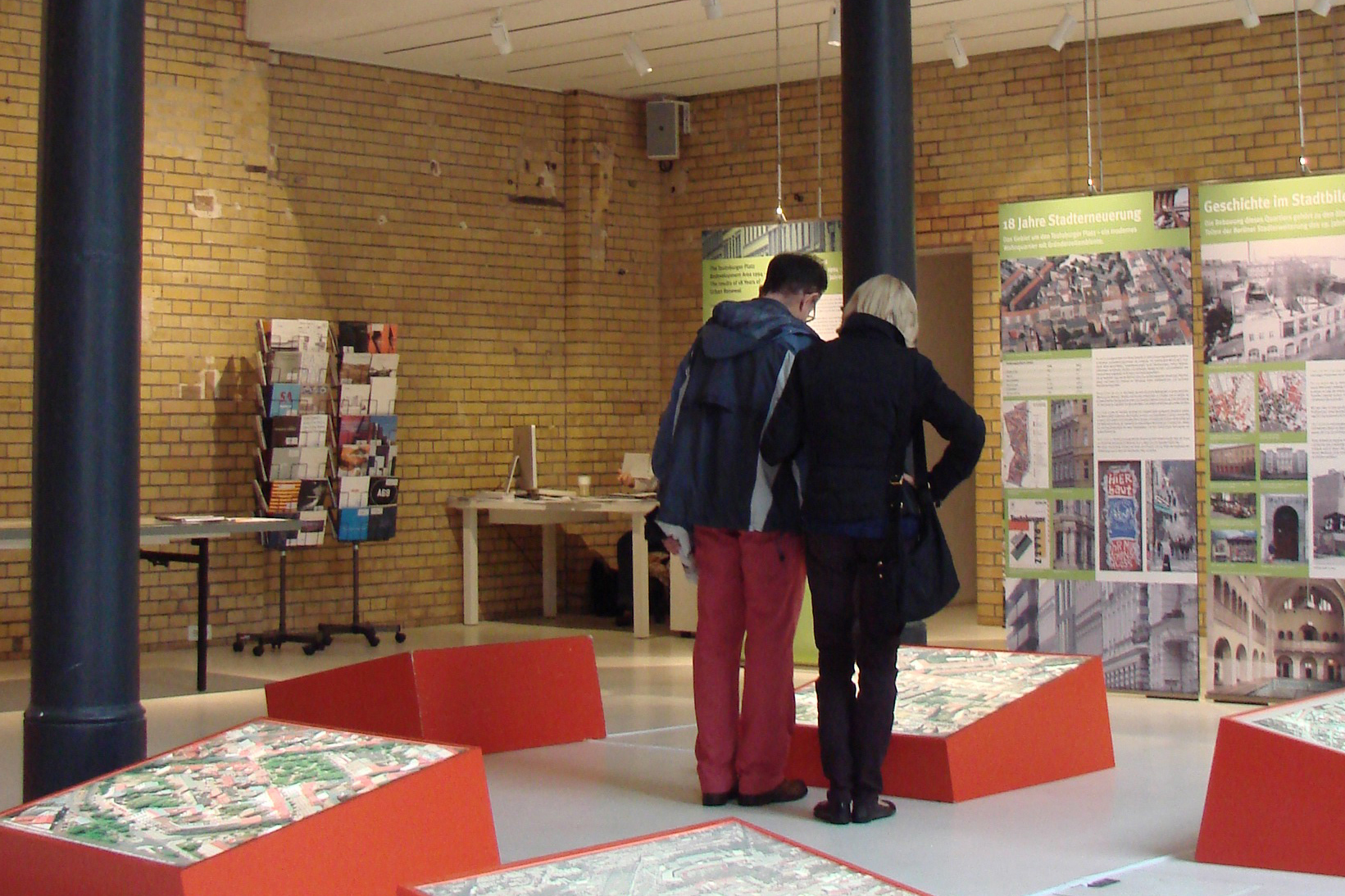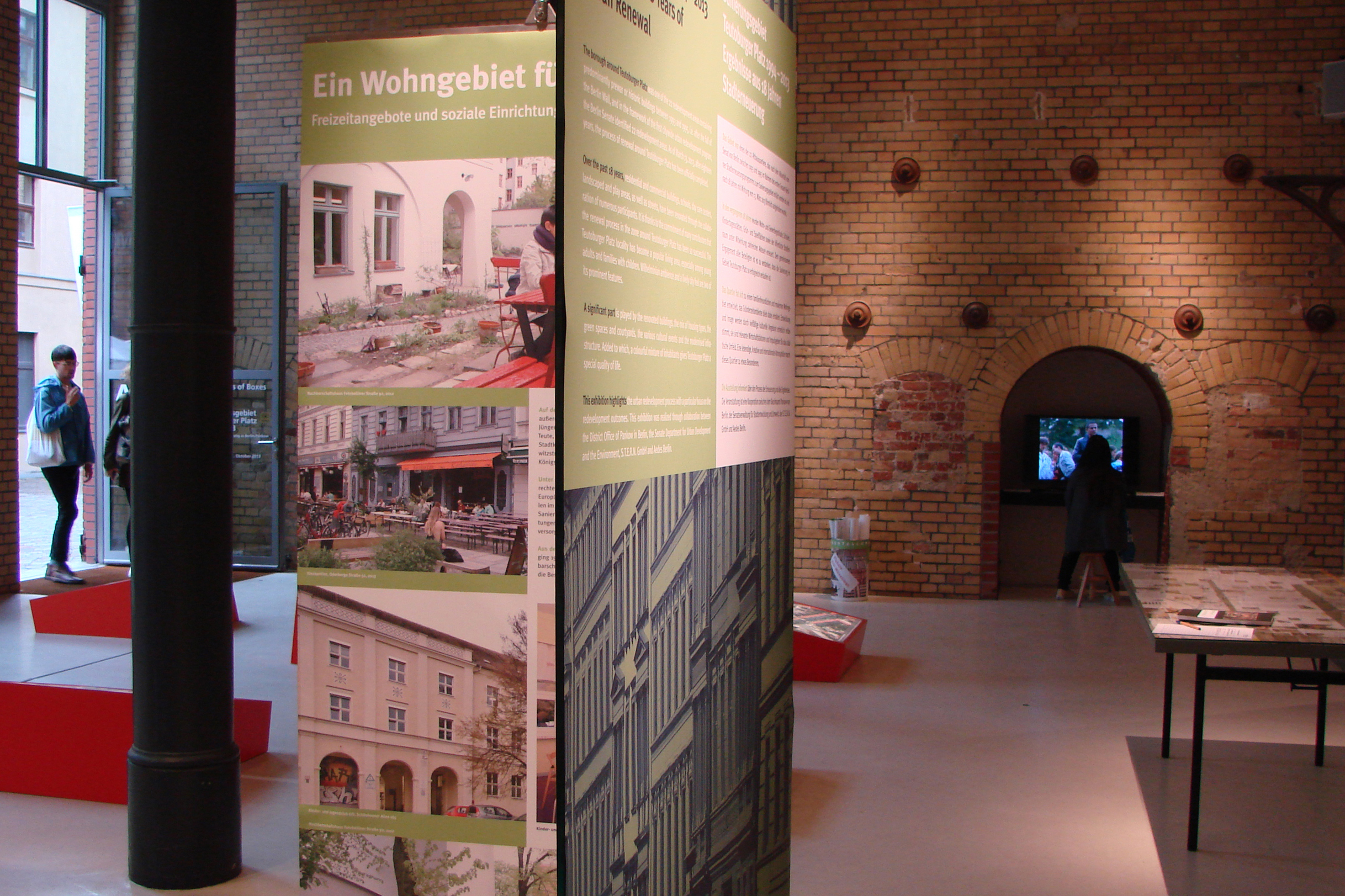This exhibition highlights the urban redevelopment process that took place around Teutoburger Platz in Berlin during 1994 – 2013.
Between 1993 and 1995, i.e. after the fall of the Berlin Wall, and in the framework of the first citywide urban redevelopment program, the Berlin Senate identified 22 redevelopment areas containing predominantly prewar or historic buildings. As of March 13, 2013, after eighteen years, the process of renewal around Teutoburger Platz has been officially completed.
The borough around Teutoburger Platz is among the nineteenth century districts that arose around the historic city center of “Berlin-Cölln,” and forms part of the largest continuous late-nineteenth-century urban quarter in Europe. During the GDR period, it was referred to as “Berlin's Montmartre.” Its dilapidated nineteenth-century buildings provided a venue for the artists, bohemians, and others from the alternative scene. Even after German reunification, this area’s legend lives on. Meanwhile, the district has evolved into a family-friendly and contemporary neighborhood.
Over the past 18 years, residential and commercial buildings, schools, day care centers, landscaped and play areas, as well as streets, have been renovated through the collaboration of numerous participants. It is thanks to the commitment of many contributors that the renewal process in the zone around Teutoburger Platz has been so successful. These protagonists include: the Senate Department for Urban Development and the Environment, the Pankow District Office, Mieterberatung (tenant counseling) Prenzlauer Berg, the supervising agency S.T.E.R.N., Betroffenenvertretung, local representatives of Teutoburger Platz and numerous citizen initiatives dealing with individual projects.
Important historic buildings such as the former Pfeffer Brewery, the so-called Pfefferberg as a venue for events, a location for art galleries, visual artists, and restaurants, and Prater, which is also a venue of the Volksbühne Theater, have developed into well-known gathering places. The areas multifarious cultural offerings provide important stimuli for the urban surroundings, and are major economic factors as well. Its lively, creative, and international atmosphere makes this quarter something truly special.
Through the redevelopment process and the partial reconstruction of Oderberger Straße and Kastanienallee, it has proven possible to achieve essential improvements in the amenity qualities of both streets and public squares. The laying out of a landscape and athletics area at Oderberger Straße 19, which measures circa 3600 square meters, provides attractive new recreational opportunities for residents of all ages. This project was preceded by vigorous discussion and a comprehensive process of public participation.
For the realization of a number of exemplary projects designed to serve children and young people, the redevelopment area in Prenzlauer Berg received the Special Prize of the Deutscher Städtebaupreis (Urban Development Award) for 2003. In 2005, in order to preserve its urbanistic singularity, the area around Teutoburger Platz was declared a conservation area, and thereby became a district backdrop for the sponsorship program “Städtebaulicher Denkmalschutz” (Urban Historic Preservation) in Germany.
This exhibition was realized through collaboration between the District Office of Pankow in Berlin, the Senate Department for Urban Development and the Environment, S.T.E.R.N. GmbH, and Aedes Berlin.
A brochure was published by the Bezirksamt Pankow von Berlin.
Sponsors
Europäischer Fonds für Regionale Entwicklung, Bundesministerium für Verkehr, Bau und Stadtentwicklung, Städtebauförderung, Städtebaulicher Denkmalschutz, S.T.E.R.N. Behutsame Stadterneuerung, Mieterberatung Prenzlauer Berg, Bezirk Pankow, Senatsverwaltung für Stadtentwicklung und Umwelt, Zumtobel, carpetconcept, AXOR
Diese Ausstellung wurde ermöglicht mit der großzügigen Unterstützung von:


